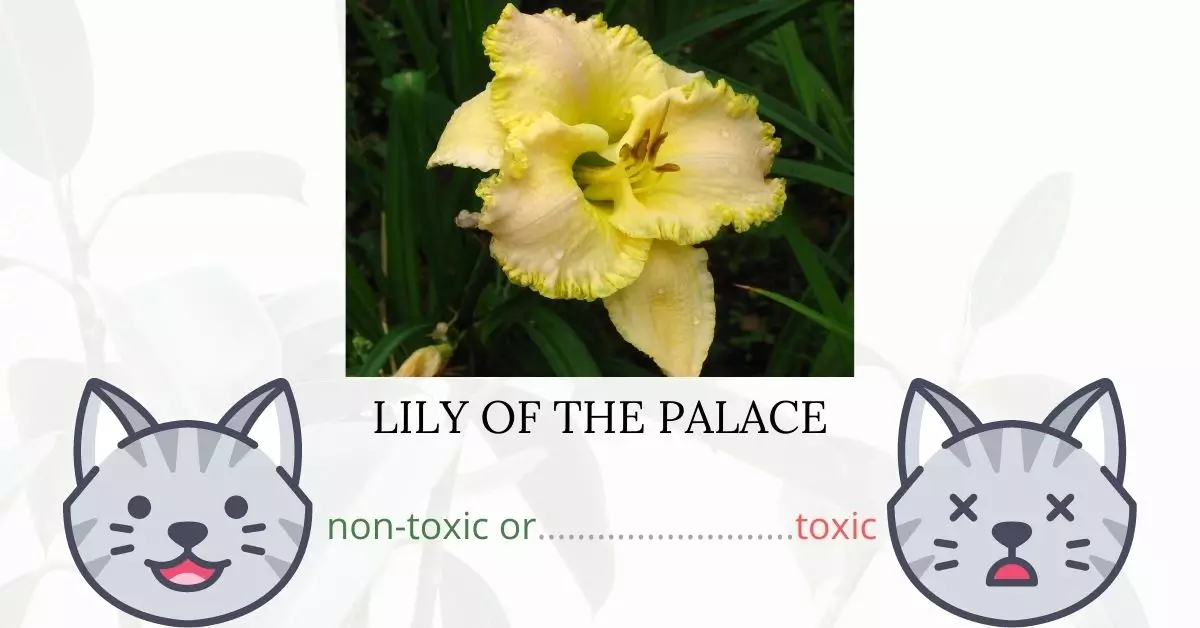Lilies of the Palace, alternatively known as Fire Lily, Barbados Lily, and Ridderstjerne, undeniably possess toxins that are hazardous to cats. To directly answer the title’s inquiry, yes, they are toxic to cats.
This article, compiled in collaboration with a team of proficient Doctors of Veterinary Medicine (DVMs), aims to furnish precise and current insights regarding the potential dangers associated with Lilies of the Palace and their consequential impacts on cats. The team’s invaluable contributions and extensive experience in veterinary medicine have significantly enhanced the credibility and reliability of the information provided herein. Additionally, comprehensive research has been conducted utilizing high-authority resources such as the ASPCA and PetMD to ensure the accuracy and relevance of the information on every plant discussed, particularly focusing on Lilies of the Palace.
Lilies of the Palace contain alkaloids such as lycorine, galanthamine, and tazettine. Lycorine is deleterious as it obstructs protein synthesis within the body. Galanthamine, known for its acetylcholinesterase inhibitory properties, has been researched for treating moderate Alzheimer’s and other memory impairments; however, it becomes perilous when it meddles with the parasympathetic nervous system. Conversely, tazettine is a hypotensive alkaloid, capable of reducing blood pressure to perilously low levels. Through this collaborative effort, we aim to raise awareness of the potential hazards posed by these beautiful yet harmful plants to our feline companions and promote responsible pet ownership and plant management.
Clinical Signs of Lily of the Palace Poisoning in Cats
When a cat is exposed to or consumes any part of a Lily of the Palace plant, clinical signs of poisoning typically manifest within a few hours post-ingestion. The severity and range of symptoms may vary depending on the quantity consumed but are usually confined to gastrointestinal distress unless substantial portions of the plant have been ingested. Here, we delineate each sign and elucidate the underlying cause:
- Vomiting: This is a primary reaction due to the irritation and damage caused to the gastrointestinal tract by the alkaloids present in the plant, leading to the body’s attempt to expel the ingested toxins.
- Excessive Salivation: The irritants within the plant induce increased salivation as the body’s response to counteract and dilute the irritating compounds.
- Diarrhea: The presence of toxins in the plant disrupts the normal functioning of the digestive system, leading to accelerated bowel movement and diarrhea.
- Abdominal Pain: The harmful compounds in the Lily of the Palace instigate inflammation and irritation within the gastrointestinal tract, causing discomfort and abdominal pain.
- Convulsions: Alkaloids in the plant, such as galanthamine, interfere with the nervous system, potentially leading to abnormal electrical activity in the brain and subsequent convulsions.
- Cardiac Arrhythmia: The toxic elements in the plant can adversely impact the heart’s electrical activity, resulting in irregular heart rhythms or arrhythmias.
- Low Blood Pressure: The alkaloid tazettine can induce a hypotensive effect, resulting in a dangerous drop in blood pressure.
- Tremors: Result from the plant’s toxins interfering with normal neuromuscular functions, causing involuntary muscle movements or tremors.
- Respiratory Depression: Some compounds in the plant can affect the respiratory centers in the brain, leading to decreased respiratory rate and difficulty breathing.
Recognizing these signs early and seeking immediate veterinary attention is crucial to managing and mitigating the adverse effects of Lily of the Palace poisoning in cats effectively.
First Aid and Treatment of Lily of the Palace Poisoning in Cats
Your veterinarian will begin supportive care for poisoning quickly, which may include intravenous hydration, oxygen therapy to treat respiratory symptoms, appropriate cardiac medicine, or medication to treat other organ system deficiencies.
If the plant was recently consumed, vomiting may be used to eject it from the digestive system, or activated charcoal may be used to bond with the plant toxins and allow them to pass through your cat’s gastrointestinal system.
Recovery from Lily of the Palace Poisoning in Cats
After treatment, the clinical signs of lily of the palace poisoning should subside in a few hours. Going home to a serene and calm environment will enable your cat to fully recover quickly. If stomach lavage was performed, your pet may need several hours to recover from the confusion and disorientation produced by the anesthesia.
Prevention of Lily of the Palace Poisoning in Cats
Remove lilies and any other hazardous plants from your house or garden especially if you have a cat who likes to gnaw on plants. Because Lily of the Palace can be found in flower arrangements, keep any floral arrangements containing this or other dangerous plants out of reach of your cat and stored in a room they cannot get into.
If you love plants but have cats at home, check out these lists:





